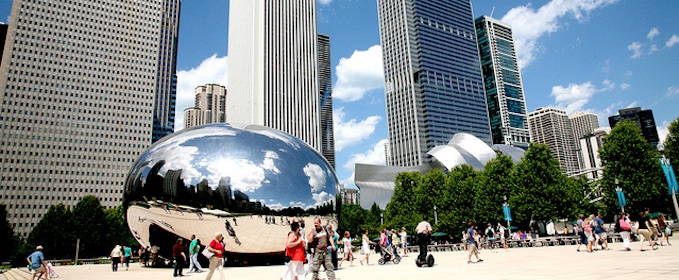What do you with art when it’s not hung on the pristine white walls of a museum? Public art — works of sculpture, murals, and other pieces that exist in freely-accessible, community-centered spaces — poses a unique challenge, for its position outside of a museum makes it especially susceptible to being overlooked as it’s intended viewers move about their daily lives. Knowing where a work is, knowing what it is, and having the time to reflect on and appreciate it seem at times to be mutually exclusive prerequisites –both for the preoccupied jogger unwittingly passing by a beautiful mural and for the cultural tourist searching in vain for a hidden sculptural treasure on a college campus.
The Public Art Archive, founded in 2009, seeks to catalog public art throughout the US, and to provide art enthusiasts with a data-rich, comprehensive source to locate and learn about works of public art. In a recent interview, Rachel Cain, program manager of the Public Art Archive identified the problematic lack of a centralized digital resource dedicated to public art, noting that many works are documented on the websites of individual cities or not documented online at all.
The archive, meanwhile, allows users to submit works of public art to be included on the site. Each entry can include multiples images of a work, audio interviews, textual descriptions, and videos linked from external sources including YouTube. The site’s browse feature allows users to look for works geographically by clicking through a mapping feature.
Why worry about making these works available online? Cain identifies three groups of users likely to use the Public Art Archive: public art administrators looking to research what’s out there; public artists seeking to learn more about projects similar to those they might be proposing; and cultural tourists who use the site to find works they’re interested in visiting. There is, I think, something central to public art that predisposes these works to being accessed online. If any artwork is meant to be seen by a broad, geographically-diverse audience, a public art piece would truly fit the bill. After all, public art is explicitly commissioned for public spaces with the intention that any viewer can find it at any time of the day. Public art exists as a recognition that while sometimes museums and galleries can seem intimidating, exclusive, or (physically, literally) far away, we shouldn’t cast those perceived limitations onto art itself — everyone should be able to see works of art, whether or not they’re in a position to pay admission to a museum.
A digital archive of public art takes that sentiment one step further. Yes, the archive exists in part to provide data on public art throughout the country, but a byproduct of this cataloging effort is that a rich collection of public art objects breaks down the most notable obstacle separating those objects from being universally accessible: geography. The works move from a the relatively open town square or campus quad to the Internet, the ultimate public platform.
Image courtesy of Vincent Desjardins on Flickr; used under a CC BY 2.0 license.
